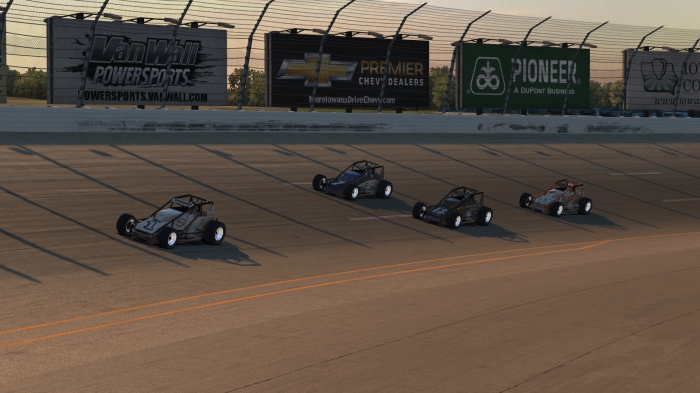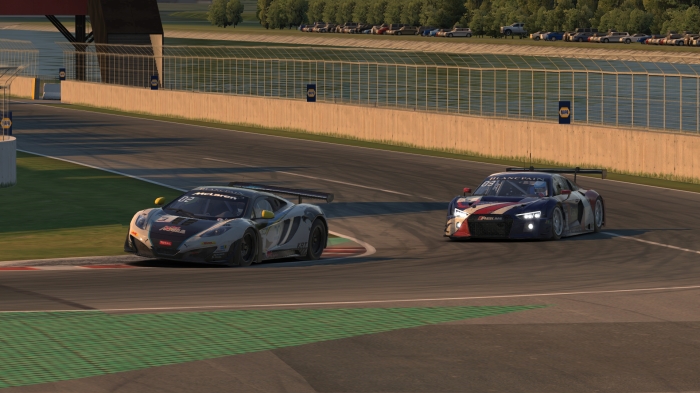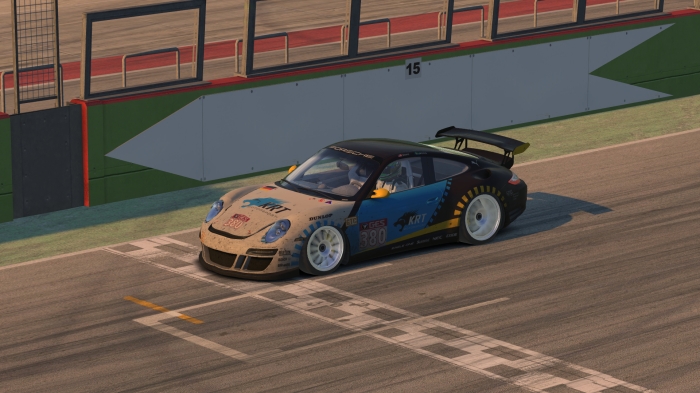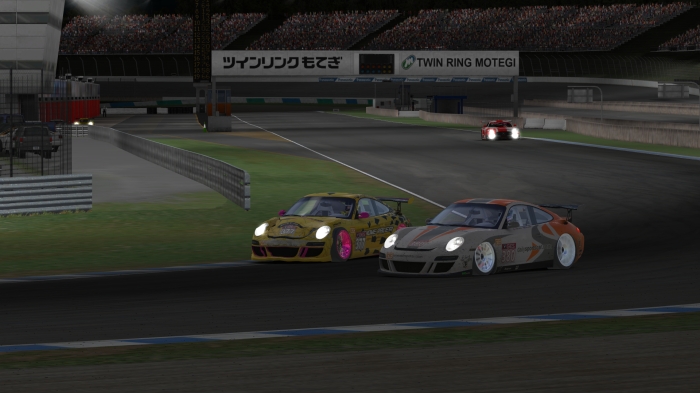Whether driving in the real world or in a simulator, racers are used to making snap decisions behind the wheel. In the car, it could be choosing when to make a pass or which strategy seems best. Out of the car, it could be changing courses in your driving career, even if it’s in the middle of a season. Over the past few months, my decision-making abilities in both of these areas have been put to the test.
An Oval Adjustment
As I mentioned in a previous post, one big decision about the direction of my sim racing path loomed last fall. After my long-time oval racing league home shut down, I faced the choice of finding a new league, running an official oval series, or stepping away from oval racing entirely.
Ultimately, I chose to switch from stock cars to sprint cars and run their official series, which has a small league-like community of brave souls who dare to take on that rocket with a rollcage.
In my first race in the car, I qualified poorly but raced through the field to finish in sixth. My main takeaway from the race was a close side-by-side battle I had with another driver, which I almost doubted was possible given how difficult this car is to drive even with no other cars around.
The next week at Iowa provided more of the same, including an awesome four-way battle for position late in the race. Iowa’s multi-groove surface meant there were options for where to race and pass, and that presented opportunities to make in-race decisions.
I was one of the first drivers to move up to the middle groove, and I passed at least one car that way. However, in the closing laps, I went low to attempt a pass for fourth place and was instead passed by another car running the middle. That put me in sixth for the second straight week, but the awesome and clean racing told me my decision to run in that series was the correct one.
As the season continued, I started finishing in the top five more often than not and I got progressively more comfortable driving and tuning on the car. I still have nowhere near the setup expertise of the top drivers, but that has made racing against and even beating some of them all the more satisfying.
As a rookie in the sprint car series, I finished seventh in points out of 29 people who ran the full season. After my first season in the car, one decision was easy: I wanted to return for another one, hoping for continued improvement and more experience driving a car with high horsepower and low grip in anticipation of the impending arrival of dirt racing.
In addition to running the official series, I was also introduced to a Sunday night sprint car league that plans to run both asphalt and dirt tracks beginning this spring. That means in the span of four months, I’ve gone from being an oval racing nomad to finding a new home with an exciting future driving one of the most challenging but fun cars on iRacing.

Finding an Old Favorite
Along with my return to official oval racing last season, I also committed to running a full season in the GT3 road racing series, hoping to improve my racecraft and stay fresh turning both left and right.
The GT3 series is one of the few on iRacing with multiple car makes, each with their own strengths and weaknesses. That meant I had a decision to make about which car I wanted to drive.
Historically, I’d always run the McLaren MP4-12C, which is fast but not as nimble as the other cars in the series. For this season, though, I chose the Mercedes AMG GT3: a heavier but more well-rounded car compared to the McLaren that I’d driven a few times since its release last spring.
The first few weeks went fairly well, but each time I drove it, I noticed the same problem: By the middle of the race, the car got really tight in the corners, no matter which adjustments I made.
As I was preparing for a race at one of my favorite tracks, Circuit Gilles Villeneuve in Montreal, I was struggling with the same issue in the Mercedes. So in a mid-season change of course, I decided to switch back to the McLaren.
Despite having not driven it in more than six months, I felt immediately comfortable behind the wheel. After completing some practice laps, I signed up for a race that ended up being my best of the season, and perhaps ever in the GT3 series. After dodging a first-lap incident in one of the tight chicanes, I settled into a close battle with an Audi driver.
We were rarely separated by more than a second, and he kept the pressure on me all race long. In the end, though, I was able to hold him off for a second-place finish and my best points haul of the season. The change of car, it seemed, was another decision well-made.

A Pit Maneuver
My other road racing focus in recent months has been the Gathering of Tweakers Endurance Series, or GES: a set of five team-based endurance events, each either three or four hours in length. My trusted teammate Karl and I joined forces to drive one of our favorite cars: the Ruf C-Spec, a Porsche 911 GT3 Cup car in disguise that will soon be joined on iRacing by its Stuttgart-built counterpart.
In the first race of the season at Road America, we had good speed and seemed on track for a second-place finish until an unavoidable collision with a lapped car ended our race with just 30 minutes to go.
Facing a big hole in the points, we hoped to rebound in the second round at Imola. Karl qualified in second and was involved in a tight three-way battle for the lead in the opening stint. After I got in the car, I found myself in the middle of that same battle, eventually falling to third place but chasing down the car ahead.
As we neared the end of my stint, we had a decision to make. Each car in our class needed two more pit stops: one full-length stop for tires and fuel plus one short stop for a splash in the tank. Those short stops are generally reserved for the end of races, but Karl had an idea to change things around.
If we made our splash early and kept me in the car, I could run some laps on a clear track without being stuck in that battle for position. We could then make our full-length stop and put him back in the car, hopefully out-pacing the leaders during his final stint and coming out ahead of them once they made their short stops.
When he first suggested it, I was so focused on catching the car ahead of me that my response was something like “I don’t care what we do; you just tell me and I’ll do it”. As I thought about it more, though, it made perfect sense. I had been comfortable and quick on old tires and low fuel, so it stood to reason that I could put in some good laps without worrying about racing anyone.
I was sold, so we put that plan into action. After our final full-length stop, Karl fell back to fourth place in class and the race commentators, unaware of our strategy, seemed to think our race had fallen apart.
However, we knew better. In watching the lap times of the cars ahead of us, it was clear that Karl was catching up, and once they pitted, he had a nearly 12-second lead. The final laps wound down with the gap holding steady, and thanks to a smart and innovative mid-race decision, we managed to bring home the class win.

An Inviting Opportunity
That sort of in-race thinking is a great example of Karl and my shared synergy. We’re usually on the same page during the races, and often, one of us is providing exactly the information that the other person wants, even without him asking for it.
That’s a big reason why we have become such close and successful teammates together. However, we have come to find that we can’t do every race with just the two of us. While our sleep-deprived two-man effort in last year’s 24 Hours of the Nurburgring resulted in a victory, other past attempts at running such long races together have not been so successful.
Heading into the third round of the GES season, we faced another dilemma that our two-person team couldn’t solve. Karl would be out of town for that race, so we needed another driver to fill in for him.
As I started scrolling through the Rolodex of drivers we’d raced against in the past, I got a timely message from another team manager. He asked if Karl and I were mostly running by ourselves, and whether we’d be interested in joining his team.
The first question was easy to answer — yes, we were largely on our own. The second question might have been answered with a “no” in many cases since we mostly enjoyed our independence to race whatever we wanted together, but this particular inquiry came from a team we both respected highly.
We have competed against SRN Motorsports and their drivers for more than four years now, and in that time, we’ve seen a shared emphasis on the endurance part of endurance racing. In fact, they were our main competitors in the Nurburgring race after most other teams crashed out early on.
Still, choosing whether or not to join them would be the most difficult decision of the season. It didn’t just affect one position or one race. Rather, it would set the stage for our progression as drivers over the foreseeable future. This was the most important decision to get right, so Karl and I took time to talk it over before reaching our decision, which was to join SRN.
While it was tough to say goodbye to our old teammates, we were both excited about our new opportunity. And the early dividends look positive. In our first race together, SRN manager Daniel Graulty was solid while filling in for Karl, and we finished in fourth place in the third round of the GES season.

However, in a post that’s so far been about mostly good decisions, I should note that our greatest weakness in the race was one bad decision I made. After running the first stint and feeling confident about my abilities on old tires in the previous race, I decided to double-stint my tires, pushing them a full two hours.
Initially, it didn’t seem like such a bad idea. But by the final 10 laps of the second stint, the tires were worn and slippery, making the car twitchy and tough to handle. Twice, I either spun or half-spun, which cost us something like 15 seconds in total. At the end of the race, that likely made the difference between us finishing third or fourth.
No, it wasn’t my best decision. But in a season that was otherwise successful because of some good choices, I can live with one bad one. Just please tell my team to stop me and bolt on some fresh tires if I ever decide to try that again.